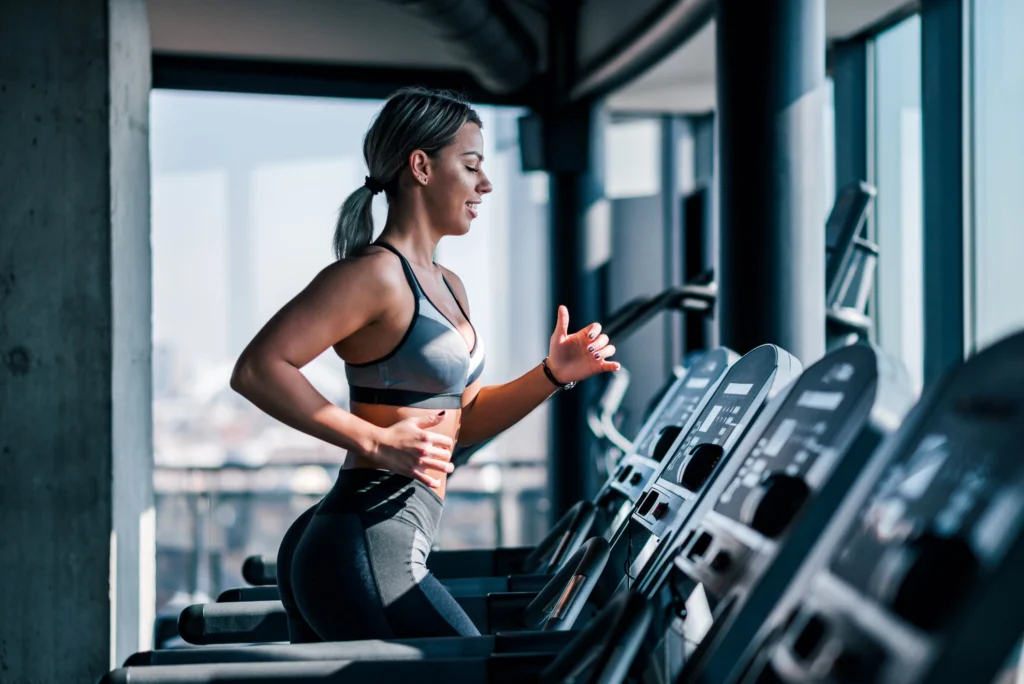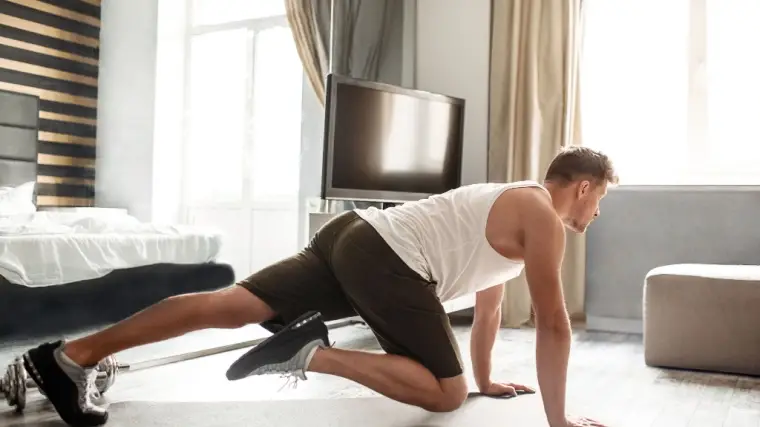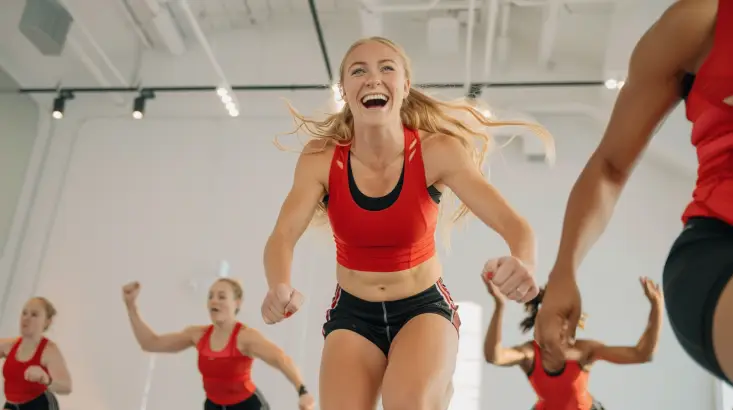Introduction
Are you ready to take your fitness routine to a whole new level? Imagine channeling the energy, dedication, and discipline of Olympic athletes into your gym workouts. Whether you’re a seasoned fitness enthusiast or just looking for a new challenge, these ten Olympic-inspired workouts will help you push your limits and achieve your fitness goals. Let’s dive into each workout, explore its benefits, and provide tips on how to perform it effectively. Get ready to unleash your inner Olympian!
1. 2000m Row
Rowing is an incredible full-body workout that engages your legs, core, and arms. This exercise mimics the movement of rowing a boat and is perfect for building endurance, strength, and cardiovascular fitness. Here’s how to get the most out of your 2000m row:
Technique Tips:
- Set-Up: Adjust the foot straps so that your feet are secure but comfortable. Hold the handle with an overhand grip.
- The Catch: At the start, your knees should be bent, and your shins vertical. Lean slightly forward from your hips with your arms extended.
- The Drive: Push off with your legs while keeping your core engaged. Once your legs are almost straight, lean back slightly and pull the handle towards your lower ribs.
- The Finish: Your legs should be fully extended, and your back slightly leaning back. The handle should be close to your body.
- The Recovery: Reverse the motion: extend your arms first, then lean forward from your hips, and finally bend your knees to return to the starting position.
Workout Goal:
Aim to complete the 2000 meters in under 8 minutes. Beginners can start with a slower pace and gradually increase their speed as their endurance improves.
Benefits:
Rowing is low-impact and suitable for all fitness levels. It enhances cardiovascular endurance, builds muscular strength, and improves overall fitness.
2. 800m Treadmill Run

The 800-meter run is a classic track event that tests both speed and endurance. Recreating this on a treadmill allows you to simulate the feeling of racing on a track while improving your cardiovascular fitness and leg strength.
Technique Tips:
- Warm-Up: Begin with a 5-10 minute jog to prepare your muscles and joints.
- Speed: Set the treadmill to a challenging pace. A good starting point is 8-10 mph, but adjust according to your fitness level.
- Form: Maintain an upright posture with your shoulders relaxed. Swing your arms naturally and keep your strides smooth and consistent.
- Breathing: Focus on rhythmic breathing to supply your muscles with oxygen and sustain your pace.
Workout Goal:
Aim to complete the 800 meters (approximately half a mile) in under 4 minutes. Adjust the speed to match your current fitness level, and gradually increase it as you improve.
Benefits:
This workout enhances cardiovascular endurance, leg strength, and running efficiency. It’s a great way to prepare for longer distance runs and improve your overall running performance.
3. 100m Sprint Intervals
Sprinting is a powerful exercise that boosts your speed, explosiveness, and anaerobic capacity. Incorporating 100-meter sprint intervals into your routine can significantly enhance your athletic performance.
Technique Tips:
- Warm-Up: Start with dynamic stretches and a light jog to prepare your muscles.
- Speed: Set the treadmill to a high speed, typically between 10-12 mph, or find a clear track for outdoor sprints.
- Form: Lean slightly forward, drive your knees up, and pump your arms vigorously. Focus on short, quick strides and explosive movements.
- Recovery: After each sprint, walk or jog for 100 meters to recover.
Workout Goal:
Perform 10 intervals of 100-meter sprints with recovery periods in between. This high-intensity workout will challenge your anaerobic system and improve your sprinting speed.
Benefits:
Sprint intervals enhance cardiovascular fitness, muscle power, and overall athletic performance. They also help burn calories and improve metabolic rate.
4. Weightlifting: Clean and Jerk
The clean and jerk is a staple in Olympic weightlifting, requiring strength, power, and coordination. This complex lift engages multiple muscle groups and is excellent for building overall body strength.
Technique Tips:
- Set-Up: Stand with your feet hip-width apart, with the barbell over your mid-foot. Grip the bar slightly wider than shoulder-width.
- The Clean: Lift the bar from the ground by extending your hips and knees. As the bar reaches your thighs, pull yourself under it, catching it on your shoulders in a front squat position.
- The Jerk: From the front squat position, drive through your legs to stand up. Then, dip slightly and explode upwards, pushing the bar overhead while splitting your legs into a lunge position.
- The Finish: Bring your feet back together to a standing position with the bar overhead.
Workout Goal:
Start with light weights to master the technique. Perform 3 sets of 5 reps, gradually increasing the weight as your form and strength improve.
Benefits:
The clean and jerk enhances total body strength, power, and coordination. It also improves flexibility and athletic performance.
5. Gymnastics: Handstand Holds
Handstand holds are a fantastic way to build upper body strength, balance, and core stability. This gymnastic exercise challenges your body in unique ways and can be modified to suit different fitness levels.
Technique Tips:
- Warm-Up: Stretch your wrists, shoulders, and core to prepare for the exercise.
- Wall Support: Start by practicing against a wall. Place your hands shoulder-width apart, kick up into a handstand position, and use the wall for support.
- Balance: Engage your core and keep your body in a straight line. Focus on distributing your weight evenly between your hands.
- Duration: Aim to hold the handstand for 30 seconds to 1 minute.
Workout Goal:
Perform 3 sets of handstand holds, increasing the duration as you get more comfortable. Advanced practitioners can try freestanding handstands without wall support.
Benefits:
Handstand holds build upper body and core strength, improve balance and coordination, and enhance body awareness.
6. Cycling: 10km Stationary Bike Ride
Cycling is an excellent cardiovascular workout that targets the legs and improves endurance. A 10-kilometer ride on a stationary bike can simulate the intensity of an Olympic cycling event.
Technique Tips:
- Set-Up: Adjust the seat height so that your legs are almost fully extended at the bottom of each pedal stroke.
- Resistance: Set the resistance to mimic the feel of outdoor cycling, with a mix of flat roads and hills.
- Form: Maintain an upright posture with a slight bend in your elbows. Push through the balls of your feet and keep a consistent pedaling rhythm.
- Intervals: Alternate between high-resistance sprints and lower-resistance recovery periods to vary the intensity.
Workout Goal:
Complete the 10 kilometers in under 20 minutes. Adjust the resistance and speed to challenge yourself and improve your cycling performance.
Benefits:
Cycling enhances cardiovascular fitness, leg strength, and muscular endurance. It’s also a low-impact exercise that’s gentle on the joints.
7. Swimming: 500m Swim (Simulated)
Swimming is a full-body workout that improves cardiovascular fitness, muscle strength, and endurance. If your gym has a pool, swimming 500 meters can be an excellent way to challenge yourself. If not, you can simulate swimming with a battle ropes workout.
Technique Tips:
- Freestyle: For freestyle, maintain a streamlined body position, with your face in the water and your arms alternating in a windmill motion.
- Backstroke: For backstroke, keep your body flat and your head neutral. Alternate your arms in a circular motion while kicking your legs.
- Breaststroke: For breaststroke, glide through the water with a frog-like kick and a sweeping arm motion.
Battle Ropes Simulation:
- Set-Up: Hold the battle ropes with an overhand grip.
- Whip Motion: Alternate whipping the ropes up and down as quickly as possible for 30 seconds.
- Recovery: Rest for 30 seconds and repeat for 10 rounds.
Workout Goal:
Complete the 500 meters in the pool or simulate the intensity with 10 rounds of battle ropes. This workout builds endurance and muscular strength.
Benefits:
Swimming improves cardiovascular health, muscle tone, and overall endurance. Battle ropes provide a high-intensity alternative that builds upper body and core strength.
8. Boxing: 3-Minute Rounds on the Heavy Bag
Boxing is a high-intensity workout that improves cardiovascular fitness, strength, and coordination. Training on a heavy bag mimics the conditioning of an Olympic boxer.
Technique Tips:
- Warm-Up: Start with dynamic stretches and light shadowboxing.
- Stance: Stand with your feet shoulder-width apart, one foot slightly forward. Keep your hands up to protect your face.
- Combinations: Practice combinations of jabs, hooks, and uppercuts. Focus on speed and precision.
- Footwork: Move around the bag, incorporating footwork to simulate an actual boxing match.
Workout Goal:
Perform 3-minute rounds on the heavy bag, with 1-minute breaks in between. Aim for 5 rounds to challenge your endurance and strength.
Benefits:
Boxing improves cardiovascular fitness, muscle endurance, and hand-eye coordination. It also provides an excellent stress relief and calorie-burning workout.
9. High Jump: Box Jumps
Box jumps are an explosive plyometric exercise that improves power, agility, and leg
strength. This workout simulates the high jump and is perfect for developing lower body explosiveness.
Technique Tips:
- Set-Up: Choose a sturdy box or platform of an appropriate height.
- Form: Stand with your feet shoulder-width apart. Bend your knees and swing your arms back for momentum.
- Jump: Explode upwards, swinging your arms forward, and land softly on the box with both feet.
- Landing: Step down gently to avoid injury.
Workout Goal:
Perform 3 sets of 10 box jumps, focusing on explosive power and controlled landings. Gradually increase the height of the box as you improve.
Benefits:
Box jumps enhance lower body strength, power, and coordination. They also improve your ability to generate force quickly, which is beneficial for various sports and activities.
10. Decathlon: Circuit Training
The decathlon combines multiple disciplines, making it the ultimate test of overall athleticism. Creating a circuit training routine that mimics the decathlon challenges your endurance, strength, and agility.
Circuit Components:
- Burpees: Perform 10 burpees for a full-body workout.
- Kettlebell Swings: Do 15 kettlebell swings to engage your hips and core.
- Pull-Ups: Complete 10 pull-ups to strengthen your upper body.
- Lunges: Perform 20 alternating lunges to target your legs and glutes.
- Plank: Hold a plank for 1 minute to build core stability.
Workout Goal:
Complete the circuit 3 times with minimal rest between exercises. This workout tests your endurance, strength, and ability to transition between different movements quickly.
Benefits:
Circuit training improves overall fitness, muscle endurance, and cardiovascular health. It also keeps your workouts varied and exciting.
Conclusion
By incorporating these Olympic-inspired workouts into your gym routine, you can push your limits, challenge your body in new ways, and feel like an elite athlete. Each workout targets different aspects of fitness, from strength and power to endurance and coordination. Remember to listen to your body, start with manageable intensity, and gradually increase the difficulty as you progress. Whether you’re rowing, sprinting, lifting, or jumping, these workouts will help you unleash your inner Olympian and achieve your fitness goals. So grab your gear, hit the gym, and start training like a champion today!
FAQs for Olympic-Inspired Gym Workouts
1. What are the benefits of incorporating Olympic-inspired workouts into my routine?
Incorporating Olympic-inspired workouts can provide numerous benefits, including improved cardiovascular fitness, increased muscular strength and endurance, enhanced coordination and agility, and greater overall athletic performance. These workouts challenge your body in diverse ways, helping you break through plateaus and achieve new fitness goals.
2. Do I need to be at an advanced fitness level to try these workouts?
No, these workouts can be adapted for various fitness levels. Beginners should start with lighter weights, lower intensity, and shorter durations, gradually increasing the difficulty as they build strength and endurance. Proper technique and form are crucial, so consider seeking guidance from a fitness professional if you’re new to these exercises.
3. How often should I do these Olympic-inspired workouts?
It depends on your overall fitness plan and goals. Incorporating 2-3 of these workouts into your weekly routine can provide a good balance. Ensure you allow time for rest and recovery, especially after high-intensity sessions, to prevent overtraining and reduce the risk of injury.
4. Can I combine these workouts with my existing training program?
Absolutely! These workouts can complement your existing training program. For example, you can add the 2000m row as a cardio session, the clean and jerk on your strength training days, or the handstand holds for core and balance training. Adjust your weekly plan to include a mix of these exercises along with your regular workouts.
5. What equipment do I need for these Olympic workouts?
Here’s a quick list of the equipment needed:
- Rowing Machine: For the 2000m row.
- Treadmill: For the 800m run and 100m sprint intervals.
- Barbell and Weights: For the clean and jerk.
- Wall or Open Space: For handstand holds.
- Stationary Bike: For the 10km ride.
- Pool or Battle Ropes: For the 500m swim (or simulated swim).
- Heavy Bag and Gloves: For boxing rounds.
- Box or Platform: For box jumps.
- Kettlebells, Pull-Up Bar, and Mat: For the decathlon circuit training.
6. How can I ensure proper form and technique for these exercises?
Proper form and technique are crucial to avoid injury and maximize benefits. Consider the following tips:
- Instructional Videos: Watch videos from reputable fitness sources to learn correct form.
- Personal Trainer: Work with a personal trainer to get personalized guidance and feedback.
- Fitness Classes: Join fitness classes that focus on specific exercises or sports to improve your technique under professional supervision.
7. What should I do if I feel pain during these workouts?
If you experience pain (not to be confused with normal muscle soreness), stop the exercise immediately. Pain could indicate improper form or an underlying injury. Consult a healthcare professional or physical therapist to assess the issue and get appropriate advice before resuming the workout.
8. How do I warm up and cool down for these workouts?
Warming up and cooling down are essential parts of any workout routine. Here’s a general guide:
- Warm-Up: Spend 5-10 minutes doing dynamic stretches and light cardio to prepare your muscles and joints. Examples include jogging, jumping jacks, arm circles, and leg swings.
- Cool Down: After your workout, spend another 5-10 minutes doing static stretches and gentle movements to help your body recover. Focus on the muscles you used during the workout, holding each stretch for 20-30 seconds.
9. Can these Olympic workouts help with weight loss?
Yes, these workouts can aid in weight loss by increasing your overall calorie expenditure, building muscle mass (which boosts metabolism), and improving cardiovascular health. Combine these workouts with a balanced diet and consistent exercise routine for the best results.
10. How can I track my progress with these Olympic workouts?
Tracking progress helps you stay motivated and make necessary adjustments to your routine. Here are some ways to monitor your progress:
- Fitness Journal: Record your workouts, noting distances, weights, times, and how you feel.
- Apps and Wearables: Use fitness apps and wearable devices to track metrics like heart rate, calories burned, and performance improvements.
- Regular Assessments: Set periodic goals and test your performance every few weeks to see how you’re progressing.
11. Are these workouts safe for older adults or those with medical conditions?
While these workouts can be beneficial, older adults or those with medical conditions should consult their healthcare provider before starting any new exercise regimen. Modifications might be necessary to accommodate individual health needs and fitness levels.
12. How can I stay motivated to keep doing these Olympic workouts?
Staying motivated can be challenging, but here are some tips:
- Set Goals: Establish short-term and long-term goals to keep you focused.
- Variety: Mix up your workouts to prevent boredom and keep things interesting.
- Workout Buddy: Partner with a friend for accountability and fun.
- Celebrate Progress: Reward yourself for reaching milestones to stay motivated.
By integrating these Olympic-inspired workouts into your gym routine, you can experience the excitement and challenge of training like an elite athlete. Remember to listen to your body, focus on proper form, and enjoy the journey toward becoming your best self.





